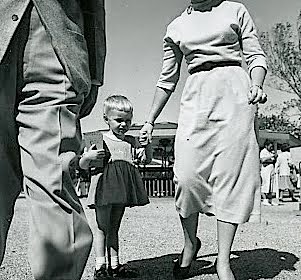 Elizabeth Shepard's novel, H, is a story told entirely through letters---correspondence by, or concerning, the case of Benjamin Sherman. The plot is necessarily fragmented: we have no comprehensive narrative exposition which ties the events of the plot together into an interpretive whole. The role of the reader, then, is much like the Freudian analyst who examines each dream, memory or association as a rich piece of evidence or telling relic, a part which suggests the missing or repressed whole. Freud often likened his work to that of an archeologist, one who examines surface detritus for what it suggests about structures buried beneath.
Elizabeth Shepard's novel, H, is a story told entirely through letters---correspondence by, or concerning, the case of Benjamin Sherman. The plot is necessarily fragmented: we have no comprehensive narrative exposition which ties the events of the plot together into an interpretive whole. The role of the reader, then, is much like the Freudian analyst who examines each dream, memory or association as a rich piece of evidence or telling relic, a part which suggests the missing or repressed whole. Freud often likened his work to that of an archeologist, one who examines surface detritus for what it suggests about structures buried beneath.Freud used the metaphor of archeology quite early in his work, long before he fully developed the model of accessing latent content via its manifest traces in dream interpretation. In Studies of Hysteria, he likened analysis to "the technique of excavating a buried city." And in his essay "Delusions and Dream in Jensen's Gradiva," he again invoked the metaphor in this passage: "There is actually no better analogy for repression, which both makes something in the mind inaccessible and preserves it, than the burial that was the fate of Pompeii and from which the city could reappear through the work of the spade."
Literary theorist Pierre Macherey called such interpretive work, symptomatic reading. As in psychoanalysis what is not said is as important as what is said, and a symptomatic reading must focus on what the narrative omits or excludes as well as what it has included. Clearly, H demands an attentive reader who can read the silences in and between individual letters, who can hear what is stubbornly not being said, who can perceive the avoided and repressed as well as the obvious. For most of the characters in H, Benjamin is clearly the problem, for the reader he is part of a problematic: a larger story which includes the story of the Sherman family, the story of Mr. and Mrs. Sherman, the story of siblings Benjamin and Hannah, the story of conventional psychiatric treatment, the story of conventional notions of childhood and childhood development, and so forth, all of which must be excavated in order to make sense of Benjamin and Elliot.
Discuss your excavation of H: what were you able to reconstruct of the "missing" problematic? What parts remain indeterminate or unrecoverable? Does the narrative itself suggest or imply certain ways of filling in the blanks? Does it favor some interpretations over others? And most importantly, how does the narrative conceptualize the important categories of "sick" and "healthy"? The text's authority figures all take Benjamin to be "sick" (though with differing definitions of "illness") and they advocate for his "health" (again with very differing notions of "sanity"). How does the narrative resolve these contradictions (or does it)? Clearly Benjamin has changed by the end of the story, and clearly this change is predicated on the loss of a rich and creative, if quirky, imaginative structure. Much like the Freudian infant whose polymorphous capacity for pleasure must be narrowed down and contained within accepted behaviors, Benjamin must shed those parts of his psyche which "don't fit." Does the narrative suggest how we should interpret and judge his transformation?
Length: around 5 pages
Due: Monday, November 30


























































No comments:
Post a Comment